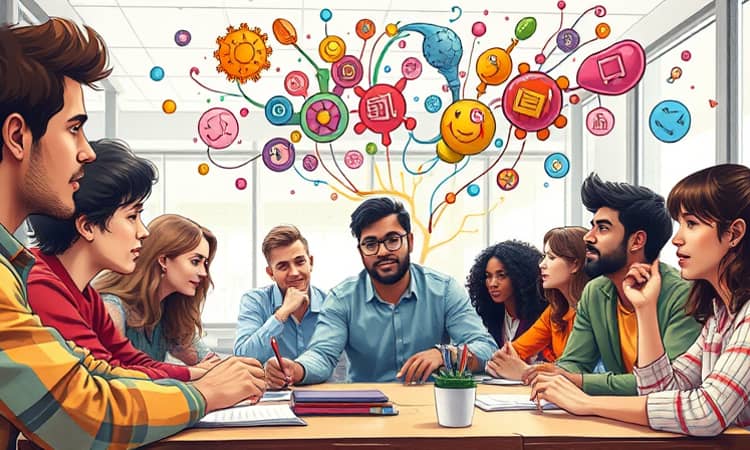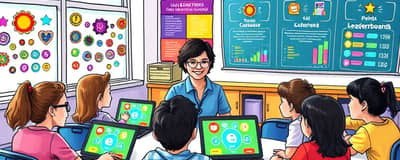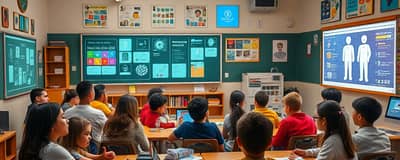In an era defined by rapid change and information overload, critical thinking has emerged as an essential skill in modern education. Students today face unprecedented challenges: discerning facts from misinformation, adapting to new technologies, and navigating a globalized world where complex problems require nuanced solutions. By fostering the ability to question, analyze, and synthesize information, educators prepare learners not just to absorb knowledge, but to transform it into meaningful action. This article delves into why critical thinking matters, explores practical strategies for teaching it, and highlights how schools and institutions can cultivate a generation of empowered thinkers ready to shape the future.
The Essence of Critical Thinking
At its core, critical thinking involves the disciplined process of actively and skillfully conceptualizing, applying, and evaluating information gathered from observation, experience, or communication. It goes beyond rote memorization to embrace activities like reflection, reasoning, and inference. Students learn to recognize biases, identify logical fallacies, and question underlying assumptions that might otherwise go unchallenged.
When learners analyze, evaluate, and interpret information effectively, they develop intellectual autonomy. This autonomy allows them to approach new subjects with curiosity, engage with diverse viewpoints, and construct well-reasoned opinions. Such a foundation not only enhances academic performance but also prepares individuals for a lifetime of informed decision-making in both personal and professional spheres.
Why Critical Thinking Matters
Critical thinking equips students with a lifelong tool for learning and adaptation. In an age where technology can execute routine tasks with increasing efficiency, the human capacity for deep reasoning, creativity, and complex problem-solving stands as an irreplaceable asset. Whether confronting ambiguous information or designing innovative solutions, the ability to think critically remains crucial.
Key benefits include:
- Improved decision making and self-reflection and sound judgment.
- Enhanced problem-solving skills to navigate academic and real-world challenges.
- Refined research abilities, promoting thorough and accurate inquiry.
- Heightened creativity and curiosity, essential for innovation in any field.
- Formation of independent opinions grounded in logic and evidence.
Bridging the Educational Gap
Despite widespread acknowledgment of its value, many educational programs fall short in delivering explicit instruction in critical thinking. Surveys of employers reveal a noticeable gap between educational outcomes and market needs, as graduates often lack the analytical depth required for complex professional roles. This disconnect highlights the urgency for institutions to reevaluate curricular priorities.
To close this gap, policymakers and educators must collaborate to embed critical thinking across all levels of learning. From early schooling to postgraduate studies, curricula should include opportunities for students to tackle open-ended problems, reflect on their reasoning processes, and justify their conclusions with evidence. Such systemic change demands commitment, training, and resources to yield lasting impact.
Practical Strategies for Educators
Educators play a pivotal role in cultivating critical thinking by designing learning experiences that challenge students to engage deeply with content. Effective strategies include:
- Prompting “why” and “what if” questions to stimulate curiosity.
- Integrating case studies and real-life scenarios for real-world context and relevance.
- Encouraging collaborative projects, allowing learners to encounter diverse perspectives.
- Providing constructive feedback focused on reasoning processes rather than just correct answers.
By weaving these approaches into daily lessons, teachers help learners build habits of mind that prioritize analysis over acceptance and inquiry over memorization. Regular practice with critical tasks—such as evaluating arguments, comparing sources, and formulating hypotheses—fosters deeper understanding and adaptability.
Measuring and Demonstrating Impact
Assessing critical thinking can be challenging, but meaningful metrics exist. Educators may use performance-based tasks, reflective journals, and structured rubrics to gauge student progress. Educators may use performance-based tasks, reflective journals, and structured rubrics to evaluate logical reasoning and evidence-based conclusions. Professional surveys and studies consistently cite top required skills by employers as critical thinking and problem-solving, underscoring the value of transparent assessment methods that align with real-world expectations.
Looking Forward: Cultivating Future Thinkers
As societies evolve amidst rapid technological advancement and global challenges, the ability to think critically will only grow in importance. Educational institutions must embrace this reality by investing in professional development, resources, and interdisciplinary collaborations that champion analytical rigor. Embedding critical thinking within every discipline ensures that learners emerge not only with specialized knowledge, but also with the cognitive tools necessary to address unforeseen problems.
Ultimately, fostering critical thinkers is about more than academic success—it’s about empowering individuals to lead informed lives, contribute meaningfully to their communities, and drive innovation on a global scale. By prioritizing critical thinking today, educators lay the groundwork for a future defined by creative solutions, ethical leadership, and continuous learning.
References
- https://learningfocused.com/increasing-critical-thinking-in-education-a-pathway-to-preparing-students-for-the-future/
- https://graduate.nichols.edu/blog/why-is-critical-thinking-important/
- https://resourceroomnc.com/2024/01/26/cultivating-critical-thinking-skills-in-education/
- https://21stcented.com/the-importance-of-critical-thinking-skills-in-the-21st-century-workplace-for-students/
- https://scholarexpress.net/index.php/wbss/article/download/4240/3602/7664
- https://tscfm.org/blogs/the-benefits-of-critical-thinking-for-students/
- https://essaypro.com/blog/importance-of-critical-thinking-for-students
- https://www.snhu.edu/about-us/newsroom/education/importance-of-critical-thinking-skills














